What Have I Got?
|
|
|
There have been many times since I started the museum that people would email and ask "What is this" or "I bought this great set of Sonor Internationals for $5000, did I get hosed?"
The following is a brief visual tutorial on what is what in the Sonor world. Next time you see something in a pawn shop, you can decide for yourself whether it's a steal or junk.
|
|
|
|
|
|
|
Sonor International, Force, Force Custom
|
|
|
|
Sonor International (1988) started the trend of low cost Asian made drums. Made completely overseas.
Force and Force Custom - (1990) were much better executed and better accepted by the Sonor faithful. German and asian components
|
|
|
|
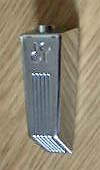 |
|
|
|
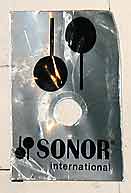 |
|
|
|
Sonor International
horrid entry level drum
(by Sonor standards)
6-ply mahogany (luan) shells with generic Taiwanese mounts (below)
|
|
|
|
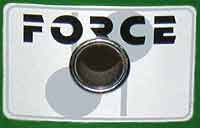 |
|
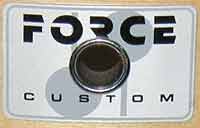 |
|
|
|
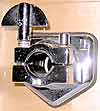 |
|
|
|
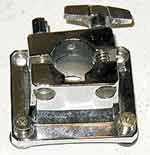 |
|
|
|
Force
decent entry level drum
9-ply poplar shells
with hybrid import mounts
(far right)
|
Force Custom
decent entry level drum
9-ply maple/mahogany shells with hybrid import mounts (right)
|
|
|
These drums use this lug note that it does NOT interchange with its German counterparts
|
|
|
|
|
Force 1000, Force 2000, Force 3000, Force Maple, Force 2001 (early)
|
|
|
|
Force 1000 picked up where the Force series left off. German made shells, lugs. Asian mounts, rims, etc.
Force 2000, 3000 and Maple - were completely accepted by the Sonor faithful. All German made components.
Force 2001 marks a return to 100% Asian made drums. Hardware is Asian made using German dies.
|
|
|
|
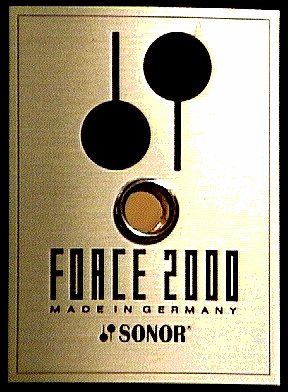 |
|
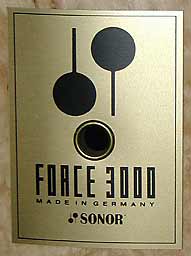 |
|
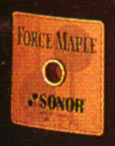 |
|
|
|
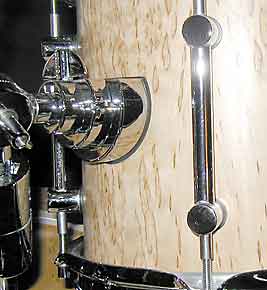 |
|
|
|
 |
|
|
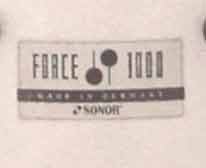 |
|
|
 |
|
|
|
|
|
Force 2001 (early)
Entry-level drum
9-ply mahogany shells -Taiwanese made
uses standard square-headed tension rods
very early examples have slotted rods
|
|
|
|
Force 1000
Decent entry level drum
uses Force Custom tom mount at upper left
9-ply German poplar shells
|
|
|
|
|
Force 2000
nice mid-line drum
9-ply poplar shells
German made
|
|
Force 3000
Nice upper mid-line drum
9-ply birch shells
German made
|
|
Force Maple
Nice upper mid-line drum
9-ply maple shells
German made
|
|
|
|
These Force drums use this style long lug
2000, 3000, Maple and 2001 use above style tom mount
|
|
|
|
|
|
|
Current Force Series
|
|
|
|
In the late 1990's Sonor with KHS in China and opened a new facitlity to make the Force series drums. Completely new designs followed. Production started with Force 2001 and 3001. In 2003, the lines were updated with TAR mounts and the 1003 and 503 models were added.
In 2005 the lines were further differentiated with 3005 going all maple, 2005 going all birch and 1005 getting new wood finishes and the upper line lugs
|
|
|
|
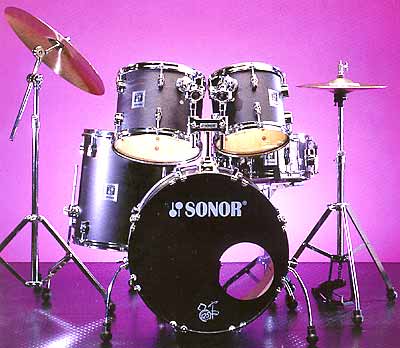 |
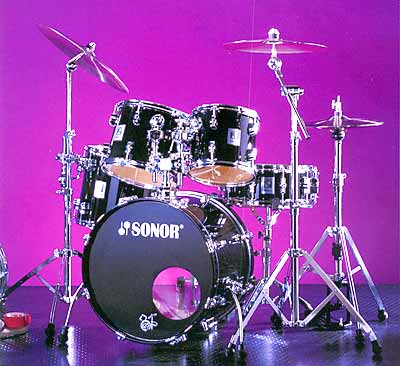 |
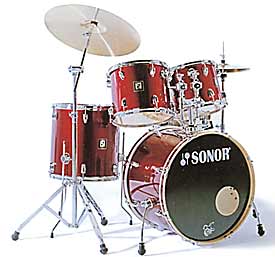 |
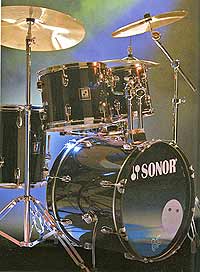 |
|
|
|
Force 2001, 2003 - 9-ply basswood shells
2005 - 9-ply all birch shell
Matte stain finishes. Chinese made entry/mid level kit.
|
|
Force 3001 - 9-ply basswood shells - wrap finishes
Force 3003 - 9-ply maple/basswood shells
wrap and lacquer finishes
Force 3005 - 9-ply all maple shells
Gloss lacquer finishes. Mid level kit.
|
|
Force 1003 - 9-ply basswood shells covered finishes. Same lugs as 503
Force 1005 - 9-ply basswood shells
Covered and matte wood finishes. Uses same lugs as 2005, 3005
Chinese made entry level kit.
|
|
Force 503, 505 - 9-ply basswood shells covered finishes. Low mass lugs.
Chinese made entry level kit.
|
|
|
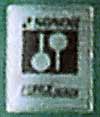 |
|
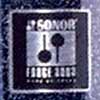 |
|
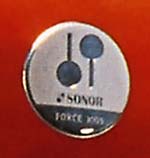 |
|
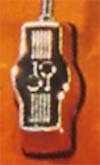 |
|
|
|
Force 2001 and 3001
badge
|
|
|
Force 2003, 3003, 1003, 503
badge
|
|
|
Force 2005, 3005, 1005, 505
badge
|
|
|
Force 1005,
2001, 2003, 2005, 3001, 3003, 3005 lug.
|
|
|
|
|
|
|
Sonic Plus, Sonic Plus II, S-Class, S-Class Maple, S-Class Pro
|
|
|
|
In the late 1990's all low end kit and hardware production was sent to China. The first examples used the old German dies the parts look identical, but the chrome and fit & finish weren't quite the same IMHO. (They have since fixed that ) Another big change was the drumshells. German shells have the grain running longitudinally (up and down) while the Chinese-made shells have the grain running latitudinally (from side to side). Interesting to note that the decorative veneer (grained Maple) S-Class Pro shells appear to be German made. The stain finishes look to be of Asian origin.
|
|
|
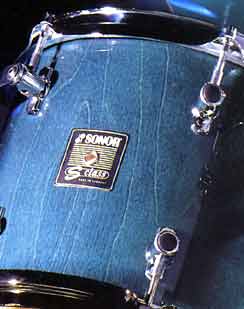 |
|
|
|
S-Class (left)
mid- level drum
9-ply birch/maple German shells
lugs are threaded to attach ISS mounts, and accessories. Same lugs used on Sonic Plus & Sonic Plus II
|
|
|
|
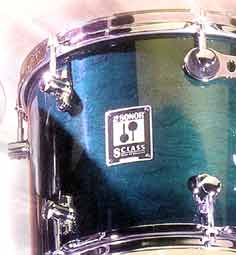 |
|
 |
|
|
|
S-Class Maple & Pro (right)
mid- level drum
currently in production.
9-ply maple shells
(Chinese) S Class Maple uses same hardware as original S-Class. Pro uses lugs at right
mounting sytem overhauled
|
|
|
|
|
S-Class Maple Badge
nice midline drum
9-ply maple shells
(Chinese) S Class Maple uses same hardware as original S-Class.
|
|
|
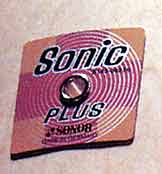 |
|
|
|
Sonic Plus
decent entry level drum
6-ply birch shells
9-ply bass& snare
German made
<-----------1995 badge
1997 & later badge ----->
|
|
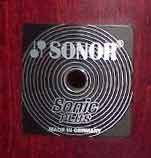 |
|
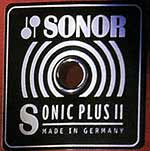 |
|
|
|
Sonic Plus II
entry level drum
6-plymaple/mahogany Chinese shells
9-ply bass & snare
discontinued in 2001
------------>
|
|
|
|
|
|
|
|
Delite and Designer
|
|
|
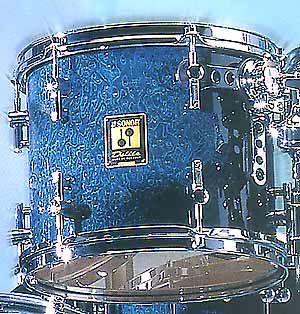 |
|
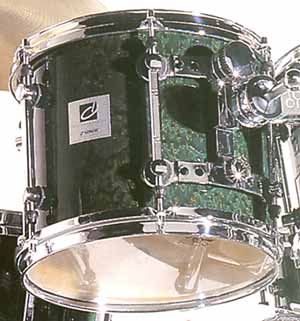 |
|
|
|
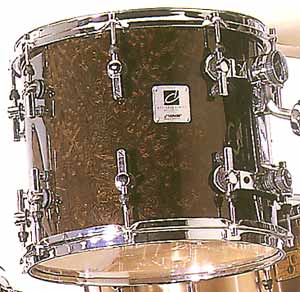 |
|
|
Delite (AKA Designer Lite)
thin 6-ply maple shells with integral Reinforcing rings. Lugs the same as Designer split lug but missing Tune-Safe. Different tom mount and ISS system. High Line Drum.
|
|
Designer Long Lug
9, 10 and 12-ply birch (depending on tom size) or 9 and 12-ply maple shells. One-piece lugs with Tune-Safe. ISS tom mounting system.
VERY High Line Drum.
|
|
|
Designer Split Lug
9, 10 and 12-ply birch (depending on tom size) or 9 and 12-ply maple shells. Split lugs with Tune-Safe. ISS tom mounting system.
VERY High Line Drum.
|
|
|
|
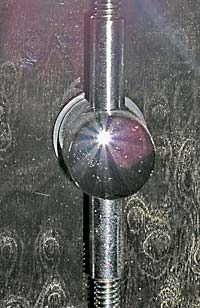 |
|
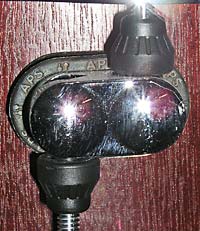 |
|
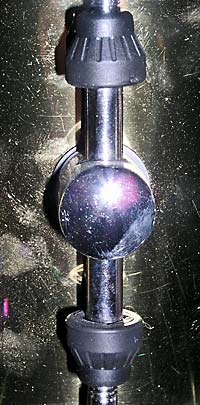 |
|
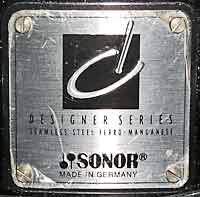 |
|
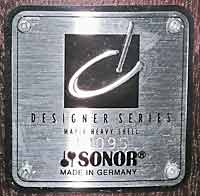 |
|
|
|
Delite Snare Lug (left)
Designer Piccolo lug (right)
Delite Piccolo lug is identical save for Tune Safe and APS
|
|
|
|
Designer Snare lug with Tune-Safe
|
|
Designer Badges
Seamless Steel Ferro Manganese and Maple Heavy.
Not shown: Maple Light and Birch.
|
|
|
|
|
|
1970's : Champion, Phonic, Swinger, Action
|
|
|
|
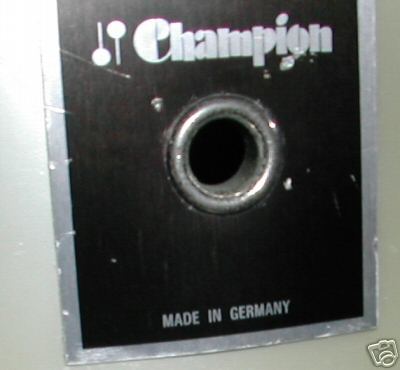 |
|
|
|
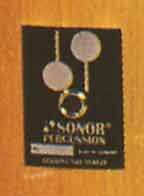 |
|
|
|
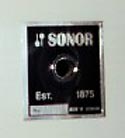 |
|
|
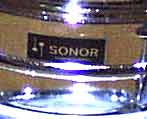 |
|
|
|
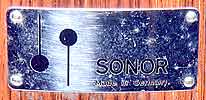 |
|
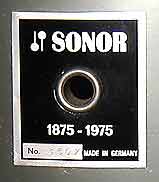 |
|
|
|
1973 - 1975, Champion
"Full Vibrating Sound Shell"
70's Champion drums are 6-ply beech with rounded bearing edges. Later Phonics are 9-ply beech with 45° bearing edges.
|
|
|
Stick-on Badge
Used on Swinger series and on some Phonic, Orff and Marching percussion
|
|
Champion Badge
1976 to early 1980's.
European Market Only
|
|
|
Centennial Phonic Badge
used from 1975 -1977 (?)
|
|
Phonic Badge used in 1977-1980 (?)
|
|
|
|
Black Oblong Phonic Badge shown in 1979 catalog
|
|
|
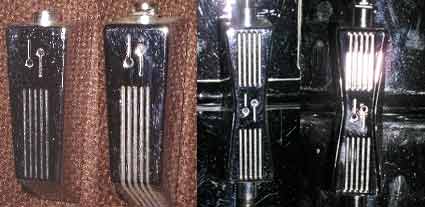 |
|
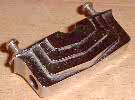 |
|
 |
|
|
|
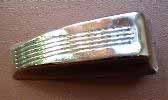 |
|
|
|
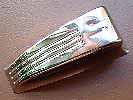 |
|
|
|
1970's Swinger Lugs
left: tom and bass drum lug - above: snare drum lug
note Ludwig Imperial copy (above left)
|
|
|
|
1970's Action lug
(thanks to Gerd Stegner at St-Drums for use of his lug pictures.)
|
|
|
|
1970's Champion and Phonic Lugs (small logo)
left: tom and bass drum lugs - right: snare drum lugs
with and without Snap-Loc
|
|
|
|
1980's -Early 1990's: Phonic, Sonorlite, Signature, Performer, Panther, Hilite
|
|
|
|
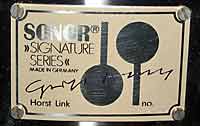 |
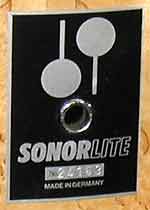 |
|
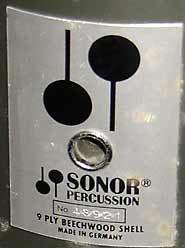 |
|
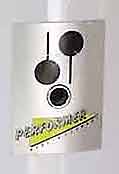 |
|
|
|
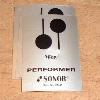 |
|
|
|
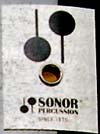 |
|
|
|
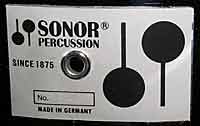 |
|
|
|
Performer Badge 2
Later version (1987-1990) looked much like Phonic badge with "PERFORMER" in black letters.
Shells are 9-ply poplar with 45° edges.
|
|
|
|
|
Signature Badge
1980-2003
Shells are 12-ply beech, birch or maple (Signature SE) depending on model with 45 degree bearing edges
Decorative veneer inside the shell
Various snares made of metal (bronze, ferromanganese steel, brass) or wood (beech, birch, maple) have also used the Signature badge.
Brass shelled versions are most often the "Symphony" model.
|
|
|
|
|
Panther Badge
1985-1987
Shells are 6-ply beech with rounded bearing edges
Black powder coated hardware.
|
|
Snare Badge
1980 - 1993(?)
Used mainly on Phonic Snare drums but also on Sonorlite piccolos, bongos & congas
|
|
|
|
Sonorlite Badge
1982-1994
Shells are 9-ply birch wth 45 degree bearing edges
Decorative veneer inside the shell
|
|
Silver Phonic Badge
Used from1980-1991(?)
Shells are 9-ply beech with 45 degree bearing edges.
Phonic drums from this era have 2 badges. Second badge looks like Panther badge at right.
|
|
Performer Badge 1
Used from1985-1987(?)
Early shells are 6-ply beech with rounded bearing edges. (Bass drums are 9-ply)
Performer PLUS sets in mahogany and lacquer finishes are 9-ply beech with 45° edges.
|
|
|
|
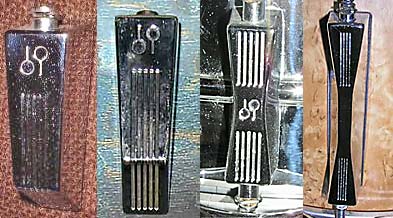 |
|
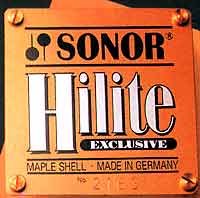 |
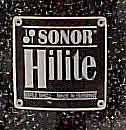 |
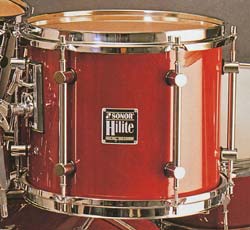 |
|
|
|
above - Hilite Badges 1988- 1994
9-ply maple shell - Rubber isolated lugs and hardware. (right)
left - Phonic, Sonorlite, Signature series tom & BD lugs far left, snare lugs left
|
|
|
|
|
|
|
|
MOUNTS
|
|
|
|
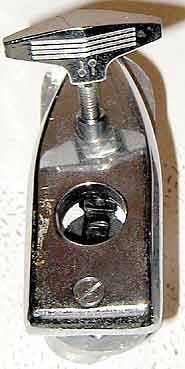 |
|
|
|
<----- 1960's -1979 Tom Mount
This one has a late 70's early 80's Phonic wing screw.
BELOW - mount used on some drums from the early 70's. This one from 1973-1974 has an incorrect wing screw.
|
|
|
|
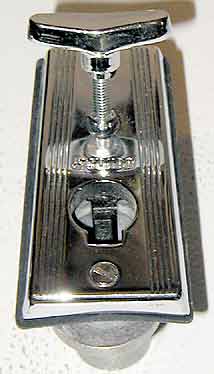 |
|
Tom Mount
1979 -1994
This one has a mid 80's Phonic wing screw.
This mount was also used on Hilite series.
Performer, Panther and early Phonic Plus used a wing screw with head below.
|
|
|
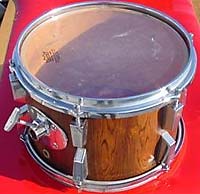 |
|
|
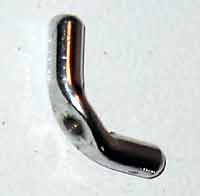 |
|
|
|
|
|
|
|
1950's & 60's Identifying Features
|
|
|
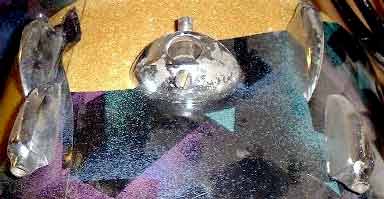 |
|
Tom Mount
1956- 1960(?)
Bass drum mount from same era is identical
Lugs 1956-1972(?)
Badge --------->
1956-1960
|
|
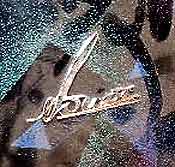 |
|
|
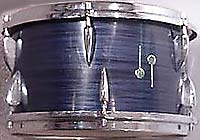 |
|
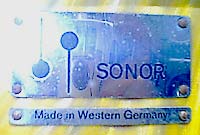 |
|
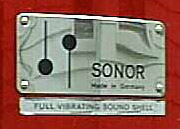 |
|
|
|
1965(?)-1974 Badges
There are 4 variations: The earliest had either
"Made in Western Germany" (early- mid 1960's)
"Made in West Germany" (late 1960's)
attached below the main Sonor insignia on a smaller badge.
Early 1970's used the example on the right or omitted the smaller badge entirely.
|
|
|
|
1961-1964(?) Tom & badge
The mallets are each held to the shell with one 3x.05mm hex screw for the head, and each "tail" has a flexible tack-nail which penetrates the shell and then is bent over.
|
|
|
|
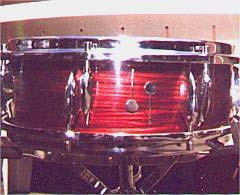 |
|
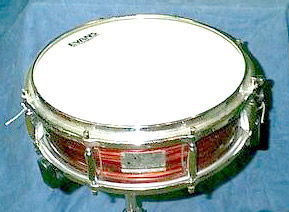 |
|
|
Left
Early 1960's snare drum
Note staggered lugs and double mallet logo. Late 60's drums may also have a separate smaller badge reading: "Made in Western Germany."
Right
Late 1960's snare drum
Note double-ended lugs.
|
|
|
|
Identifying 60's Sonors from Tobias Hoeller in Germany who owns examples of each:
1961-1964:
- the mallet badge
- left sided tom mount on BD
1965:
- rectangle badge
- centered tom mount on BD
- black plastic wing screws on hardware
- 3ply with reinforcement hoops
- tom length in metric sizes, tom diameters in inches
1966-1967:
- rectangle badge
- centered tom mount on BD
- black plastic wing screws on hardware
- 6ply
- tom length and tom diameters in inches
1968 and later ...:
- riffled steel wing screws on hardware
|
|
|
|
|
|
|
Late 40's - Early 50's Sonor Floor Tom
Pics stolen from an ebay auction. Notice the pre-teardrop lug that looks something like the WFL Zephyr design, but the leg clamps are the same as early 60's Sonor. Calf heads. Interesting badge! I should have bid on this...
|
|
|
|
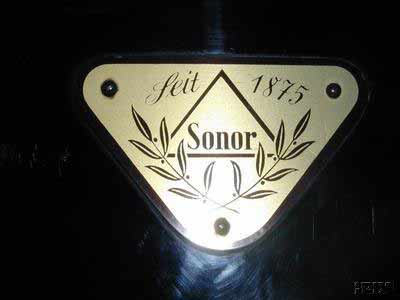 |
|
|
|
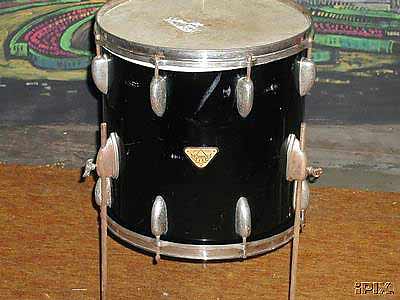 |
|
|
|
|
|
|
|
Prewar Identifying Features
|
|
|
|
For now I have very little information on Prewar drums other than the 1942 parade snare pictured HERE
and the 13" marching snare I picked up a few months ago. (below)
|
|
|
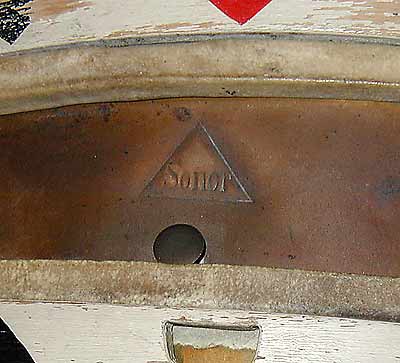 |
|
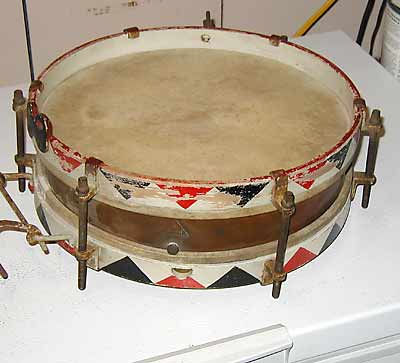 |
|
|
Pictured below is a Sonor bass drum and hardware from the 1920's. (stolen from Ollies Myterium Drums website)
|
|
|
|
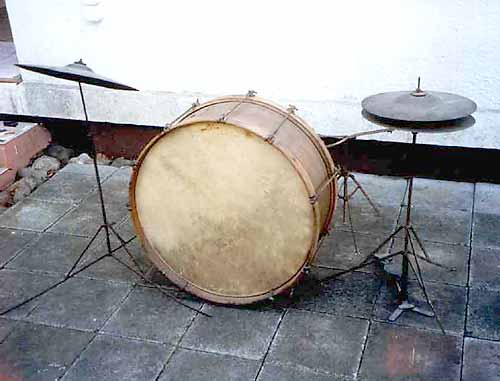 |
|
|
|
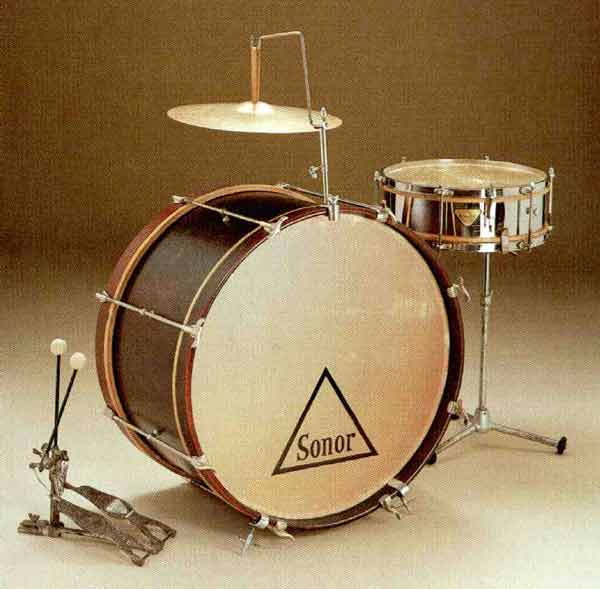 |
|
|
|
|
|
|
|
|
|
|
|
|
|
|
|
|
|
|
|
|
|
|
|
|
|
|
|
|
|
|
|
|
|
|
|
|
|
|
|
|
|
|
|
|
|
|
|
|
|
|
|
|
|
|
|
|
|
|
|
|
|
|
|
|
|
|
|
|
|
|
|
|
|
|
|
|
|
|
|
|
|
|
|
|
|
|
|
|
|
|
|
|
|
|
|
|
|
|
|
|
|
|
|
|
|
|
|
|
|
|
|
|
|
|
|
|
|
|
|
|
|
|
|
|
|
|
|
|
|
|
|
|
|
|
|
|
|
|
|
|
|
|
|
|
|
|
|
|
|
|
|
|
|
|
|
|








































































